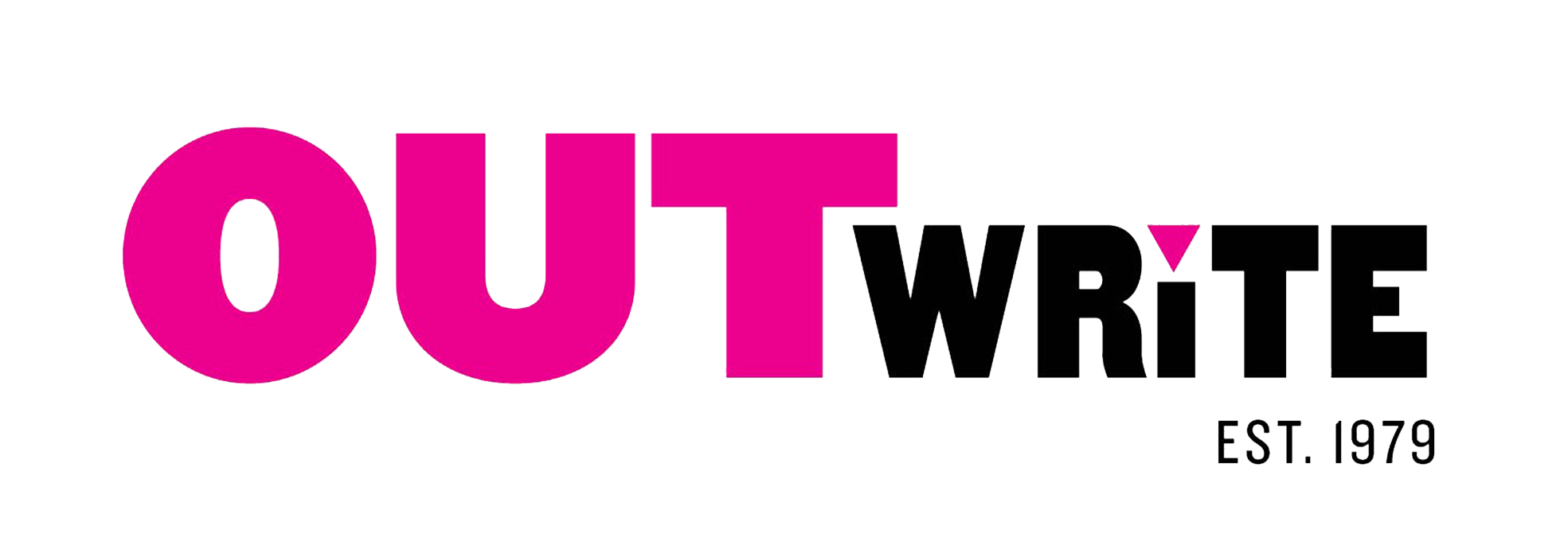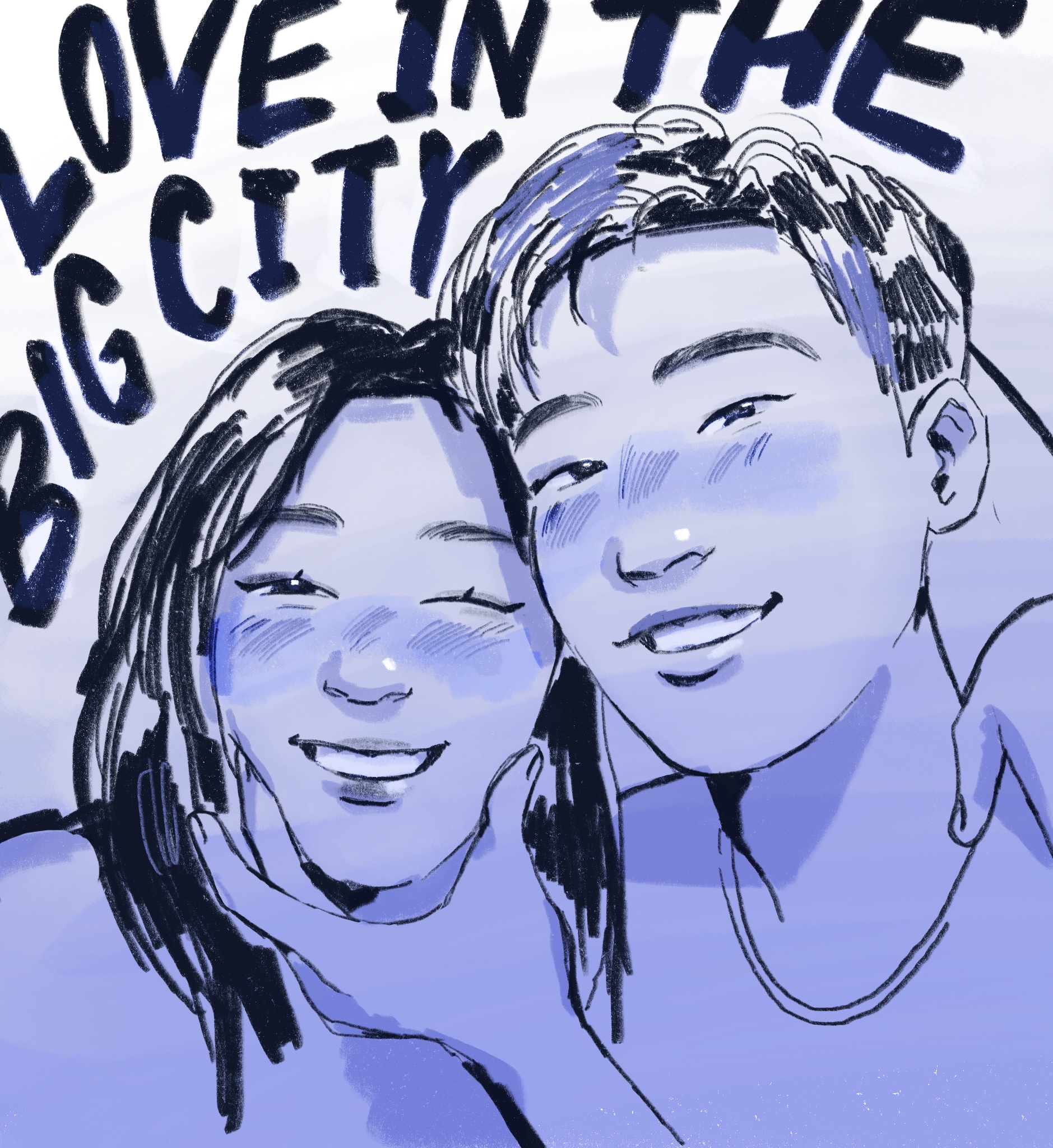Kaden Phan/OutWrite
This article contains spoilers for both the novel “Love in the Big City” (2019) and its movie and drama adaptation (2024). Quotes from the novel are based on Anton Hur’s English translation. Korean names are presented following the Anglophone convention of given name followed by family name.
Content warning: discussion of homophobia, sexual violence, physical violence
“Jaehee and I had very little sense of chastity, or none at all, to be honest, and we were apparently known for it in our respective spheres.”
With an unforgivingly queer, humorous writing voice, Sang Young Park (he/him) has continuously explored themes of gay identity and relations, establishing a prominent position within mainstream contemporary Korean literature. His most well-known novel, “Love in the Big City,” follows the main character Young (he/him) who struggles with love relations as he immerses himself in the vibrant queer culture of Seoul and navigates troublingly homophobic landscapes.
It was a pleasure for many original fans of the novel to hear about the film and drama adaptations that came out last year. While queer themes and characters have burgeoned across Korean literature and film in the last decade, it is still relatively rare to have commercial films with openly queer characters at the forefront.
Yet when the trailer for the film was first released, many members of the queer community around me expressed discontent about how it misrepresented the film; the trailer had erased all queerness and made the movie seem like a heteronormative romantic comedy. Queer scholar Hye-Won Yeon has termed this form of queer erasure as heterobaiting, the practice of disguising queer narratives as heteronormative narratives, or narratives that don’t feature queer themes or characters at all. While the Anglophone audience may be more familiar with the term queerbaiting in media, queer erasure is, of course, nothing new.
So when I went to see the film at the CGV located in Koreatown, LA, I had mixed feelings. I had heard from some of my other friends that the film itself was okay — actually queer — but I was also slightly indignant that the film only adapted the first part of the novel. The story mainly explored the relationship between the main character, Young, and his friend, Jaehee, a cisgender, heterosexual girl. The trailer, the poster, and all of the promotion for the film exuded an unmistakable emphasis on hetero romance.
In baiting the hetero audience into a queer film, are they being tricked into watching what they might consider too liberal? While we are rightly resentful and exasperated about the erasure of the queer narrative and characters, what does heterobaiting have to offer in drawing in non-queer audiences to queer representations in mainstream media?
I am inspired by an article by an anonymous author who argues that what is often perceived as queerbaiting could instead be understood as heterobaiting in the Korean drama “Run On” (2021). They argue that queerness does not necessarily require the depiction of explicitly queer relationships; instead, guiding the audience to recognize that individuals who initially appear straight may not conform to that assumption constitutes a queering process in itself.
Indeed, I have observed many of my non-queer Korean friends go see the movie expecting a typical rom-com, then be surprised by the queer representation. Interestingly, some Korean responses to the trailer on YouTube reveal a notable trend: warning others not to be baited by the trailer. These range from claims that the movie is a story of true friendship rather than romance, to implications that the two leads are actually sisters, to dismissing the movie as a gay movie that is deceiving.
It is therefore crucial to examine how the novel — and subsequently the film — chose to depict the relationship between the two leads, Jaehee and Heungsoo (Young in the novel).
“In those days, we learned a little bit about what it was like to live as other people. Jaehee learned that living as a gay was sometimes truly shitty, and I learned that living as a woman wasn’t much better.”
The film, quoting directly from the book, captures the complexity of Jaehee and Heungsoo’s relationship. Their shared experiences of discrimination go beyond the typical gay boy-straight girl friendship. What seems heteronormative on the surface in turn subverts the audience’s expectations and throws at them the multilayered structures of oppression that intertwine misogyny and homophobia in Korean society. Strikingly funny, yet profoundly sad at times, the film explores how they support each other while navigating their romantic struggles.
The most poignant depiction of love for me, however, did not involve either character’s romantic relationships. When Jaehee is presumably raped after being drugged in a club and Heungsoo gets beaten up at a queer organization’s event by homophobic groups, there is a moment on the screen when they realize something is wrong with each other, even without voicing the unjust violence they have undergone. The deep affection felt in this scene of embracing each other’s pain is communicated without words, challenging the audience’s initial expectations of their relationship when they bond over how to choose, filter out, and date the best men.
Importantly, the film also moves beyond moments of love to highlight the incommensurability of pain, rawly depicting the impossible nature of perfect solidarity. Jaehee ends up outing Heungsoo when her boyfriend interrogates her and gets angry over living with the opposite sex. When Jaehee tries to justify her actions by claiming that it was inevitable for her at the moment, Heungsoo shows extreme disappointment and anguish because he was not even out to his mom. This moment of conflict offers a brief yet striking glimpse into the fissures that remain between different positionalities of marginalization.
The TV series adaptation addresses some of the film’s shortcomings by dedicating two episodes to each part of the novel, resulting in a total of eight episodes that closely mirror the source material. Presumably because Park took part in the screenwriting for the TV series, the episodes relay many of the novel’s significant themes and lines that offer a raw and intimate portrayal of the gay experience in metropolitan Seoul, addressing critical topics like internalized homophobia, the pathologization of homosexuality, toxic familial relations, and the stigmatization of HIV in Korean society.
Yet the drama series was met with severe homophobic responses ahead of its release. According to a Korean news article, on Oct. 14, 2024, 119 organizations of citizens and parents from across the country held a press conference in front of the TV producer’s headquarters in Mapo-gu, Seoul. They called for the show’s withdrawal, saying it was “pornographic material that promotes and glorifies homosexuality.”
Despite the delight of watching the successful adaptations of Park’s queer novel, it is disheartening to see such blatant bigotry trying to erase queer existence and sanitize queer narratives. At the same time, I still struggle with the task of laying out the prevalent misogyny and homophobia in Korean society without internalizing the Orientalist lens of framing Korea in a backwards position: as a strictly conservative, strangling place for women and queer people — and of course, queer, women-identifying people.
Is queerness and queer representation in Korean literature and media not queer enough to speak to the Anglophone/American audience? How is it that I can translate queerness when the origin of the words already seems too foreign? What if the concept of heterobaiting is seen by the queer American audience as an index of how Korea is simply lagging behind in queer cultural progress, not yet ready to accept gay and queer relations in mainstream media?
I have aimed to queer the way we look at heterobaiting, but perhaps it is an impossible task to begin with. Queer theory has brought me here, but I question if my work risks reinforcing America’s centrality in producing queer knowledge.
Yet I still believe it is in this tension — between translation and estrangement, between representation and erasure — that ultimately new ways of understanding queerness can emerge. I hope to situate queer Korean literature and media within global conversations, not as a peripheral example but as a site of rich, dynamic, and complex engagement.
Korean queer media and literature do not need to conform to Western definitions of queerness to be meaningful. As I write for an Anglophone queer audience, I am reminded that this dialogue is not about proving the queerness of Korean media, but about expanding the scope of queer representation to include its many forms and contexts. Perhaps, rather than queering Korean media for the West, we should allow its stories to challenge and reshape what we consider queer altogether.

